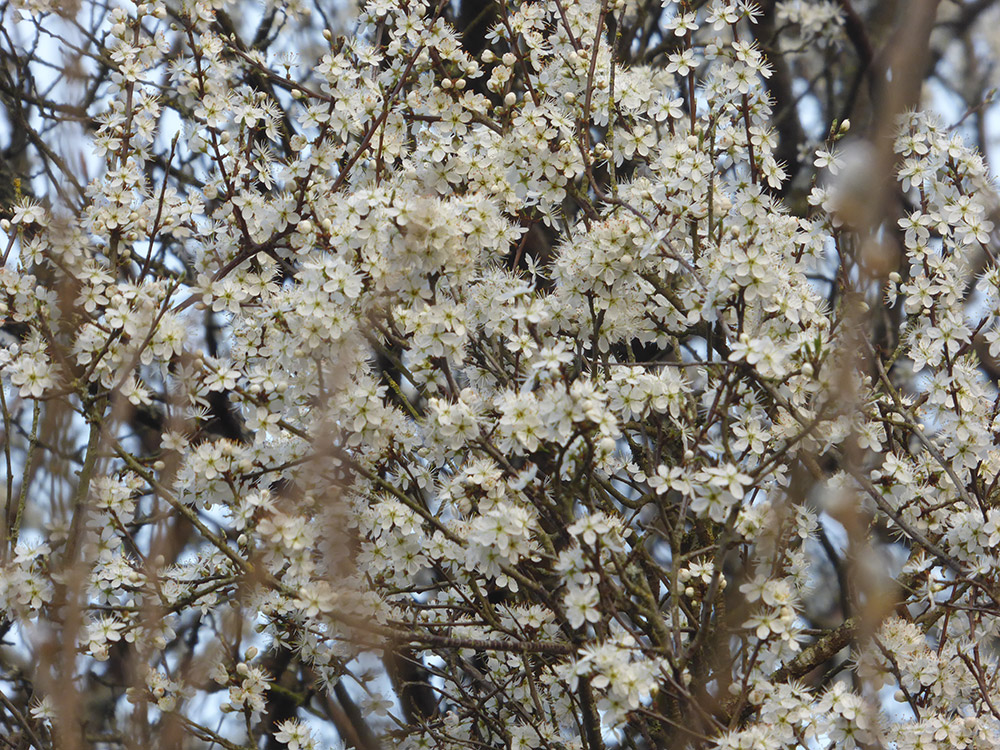As I come back from an afternoon walk, my face is smarting against the large snowflakes that twist and tumble from a dark, dense sky. It is the last day of March and this unexpected bitter cold has followed one of the sunniest and warmest spells of March weather on record.
This is what my grandmother would call a typical ‘blackthorn winter’, meaning that when the blackthorn is in full bloom in the hedgerows, we should not be fooled into thinking that spring has arrived; instead, the pure white flowers symbolise the ice and snow that are undoubtedly on their way.
In spite of this portent, I love to see the blackthorn in bloom. Gradually, as March ends and April begins, the countryside becomes festooned with drifts of star-like, bridal flowers that perch delicately, like lace, on black thorny twigs. Each sprig reminds me of an oriental work of art: pure, clean and simple. As Rudyard Kipling affirms, “of all the trees that grow so fair, old England to adorn, greater are none beneath the sun than oak and ash and thorn”.

Blackthorn (Prunus spinosa) is a widespread tree that can live to a hundred years old. It is native to Europe and western Asia and is found along hedgerows, in thickets and on the edge of woodlands. It flowers before the leaf, unlike its easily mistaken cousin, the hawthorn, whose similar blooms appear in late spring amid bright-green leaves.
Culturally, the blackthorn tree has dual connotations. It is revered for its exquisite flowers, the food it provides for bees and hairstreak butterflies, its protection for nesting birds, the strong hardwearing timber (which is good for burning or for making walking sticks) and the sloe berries that flavour our gin. But in country folklore, the tree is also named the ‘old dark crone of the woods’ for its associations with bad luck.
I recall that out on my beloved moorlands of Britain, the blackthorn is a good subject for a photograph. It often appears as a single crooked and twisted little tree that makes a sinister silhouette against the landscape. You can see why they have been long associated with witchcraft and devilment, not least because of their changeable character and the long sharp thorns that easily pierce the skin, leaving it sore and septic.
Nearing home, I feel chilled to the bone. I had been fooled into thinking spring and summer were around the corner, but alas, winter has returned.
Dr Susie Curtin
curtin.susanna@gmail.com










Leave a Reply